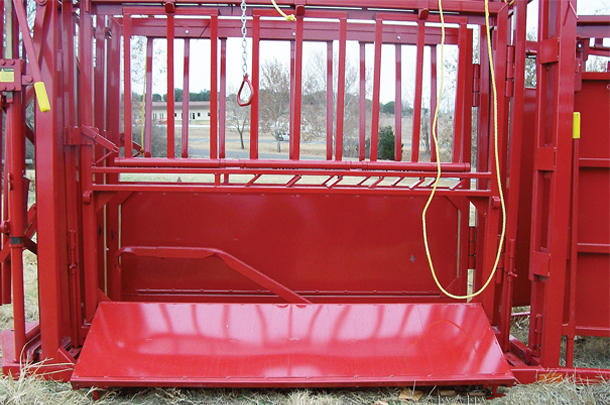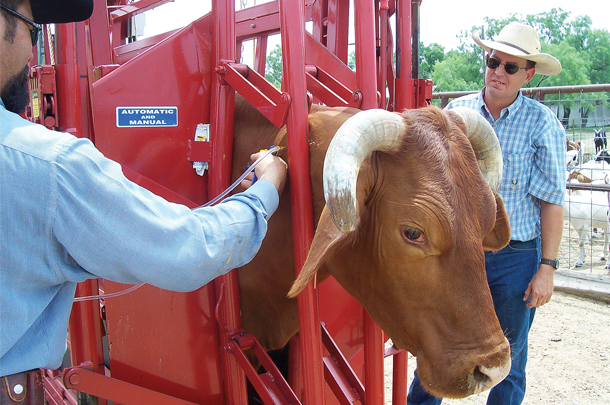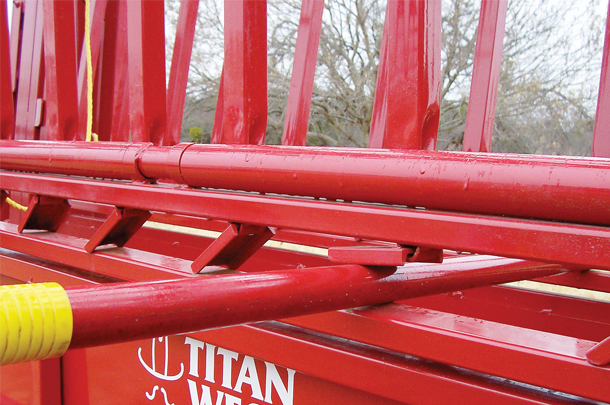Stress reduces profits because of decreased feed consumption, poor weight gains, increased susceptibility to diseases, a shorter life span and a less desirable carcass. In addition, stressed cattle require more labor.
It can take 10 people to handle a herd of nervous cattle compared to one person handling the same-sized herd of docile animals.
“Stress causes can be broken into two basic categories: nutritional and environmental,” says Dr. Ron Gill, Texas A&M AgriLife Extension Service.
“Common nutritional causes are protein and energy deprivation from overgrazing or undersupplementation. Other nutritional causes include dehydration, emaciation, mineral imbalance or deficiency, and parasite load."
"Some of the more common environmental stressors are improper handling, sorting, loading and transport, extreme temperatures and management practices such as weaning, dehorning and castration.”
Poorly designed and maintained cattle handling facilities can also cause animal stress, and the squeeze chute is often the core of the problem.
Selection of a squeeze chute should be influenced by the number of cattle worked at one time, breed and type of cattle, available labor and size of the budget.
Research the options before making a purchase. Study product descriptions on manufacturer websites and talk to other producers about what has and has not worked for them. Look at squeeze chutes not only for the ability to minimize stress and injury to cattle, but also to stockmen.
Available features
“Manufacturers who strive to make high-quality products have added several features to both their mechanical and hydraulic squeeze chutes that improve animal and operator safety and comfort,” says Rusty Alexander of Alexander Livestock in Lampasas, Texas.
“Animal stress is reduced by minimized noise in chute operation achieved through use of rubber inserts at pivot and slam points."
 "Rumber floors and Rumber sheet-covered foot doors also help reduce noise in certain models. Manufactured from 100 percent recycled tire rubber and plastic, Rumber is a strong and durable material, making it ideal for use in squeeze chutes.”
"Rumber floors and Rumber sheet-covered foot doors also help reduce noise in certain models. Manufactured from 100 percent recycled tire rubber and plastic, Rumber is a strong and durable material, making it ideal for use in squeeze chutes.”
Cleated rubber floors improve traction, which help keep cattle from slipping. Floor traction is further improved by an increased number of cleats spaced 12 inches apart.
“Stress is minimized in the design of present-day squeeze chutes by keeping the animal in a calm standing position,” Alexander continues. “A standard feature on some brands is a chest rest, which is mounted on the chute floor near the front. It prevents cows from kneeling down in the chute or small calves from lying down."
 "Generally, drop-gates lock in position when lowered to prevent cows waiting in the alley from opening it. The drop-gate can also be locked in the up position at two different heights for ease of loading the chute.
"Generally, drop-gates lock in position when lowered to prevent cows waiting in the alley from opening it. The drop-gate can also be locked in the up position at two different heights for ease of loading the chute.
“Hydraulic chutes feature headgates with neck extenders operated by a separate set of pressure controls,” says Alexander. “The neck extender gently extends and holds the animal’s head still, providing up to 15 inches of injection area on both sides of the neck.
“Whether mechanical or hydraulic, chutes are now equipped with mechanisms that firmly latch and gently hold the animal without overly squeezing. Bottom-width adjustments allow adjusting chute size to fit the animal, allowing a comfortable retention. Side escape gates are important for releasing an animal in the event of an emergency.”
Low-stress entry
Purchasing a good squeeze chute that allows safe, low-stress cattle handling is a first step. The second step is its installation in properly designed corrals. Without an easy flow of cattle from the pasture into a squeeze chute, the purchase price is wasted.
“Corral design should allow working cattle by their natural flow,” states Gill. “When cattle come from a pasture through the holding pen gate, there should be a second gate behind the animals."
"Their natural instinct is to turn around and come back out. If the next open gate is adjacent to the one you just closed, cattle will naturally flow through it without being pressured because that is the direction they want to go."
"Always design pens where you don’t have to get behind cattle. Work from their sides where they can see you. This action maintains cattle flow, and that is the objective.”

The decision of whether to use a Bud box or a tub for a crowding pen is basically a matter of personal preference. A Bud box is simply a small rectangular corral named after Bud Williams, one of the livestock low-stress handling pioneers. Williams used it on a ranch he managed and has since built and promoted Bud boxes for ranchers willing to work cattle using the techniques he taught.
“If it is properly designed and the handler works it correctly, cattle flow into the Bud box, hit a dead end and then turn back in the direction from which they came,” explains Gill. “After the cattle turn, they flow into the crowd alley single-file as long as someone is standing in the correct position near the entrance.”
“The round crowd pen (tub) works most efficiently if it is a full half-circle, 180 degrees,” says Temple Grandin, Colorado State University. “A full half-circle takes advantage of the natural tendency of cattle to go back to where they came from.
“A single-file crowding alley is very efficient if it has a single 180-degree or 90-degree curve. Multiple curves do not improve efficiency. The serpentine design with two 180-degree curves should only be used in places where space is restricted.”
“Although solid sides are common on Bud boxes and tubs, I prefer that only the lower halves be covered,” Gill states. “It is critical to cattle flow that a Bud box not be solid on the outside end. Open top halves allow cattle to see the handler on the opposite side of the fence where he controls flow. Working cattle from the outside avoids the necessity of having to get behind the animals.”
Gill says that a Bud box or tub needs to be large enough to hold the number of cattle needed to fill the crowd alley. Cattle should never be left in the box or tub after the crowd alley is filled. Any remaining cattle should be allowed to go back into the holding pen.
“The crowd alley is the chute leading from the Bud box or tub to the squeeze chute,” Gill further explains. “For cows, it is between 24 and 32 inches wide, depending upon the size of the animals being worked. Like the Bud box or tub, it is better to use half-panels to cover the bottom of the crowd alley sides than building complete solid walls. The half-panels allow cattle to see you, which allows flow control into the squeeze chute while standing at their sides.”
“Standard feature on some squeeze chutes is a manually operated crowd-ahead bar that allows the operator to encourage animals to continue to move forward through the chute,” explains Alexander. “This prevents the animals from backing out into the crowd alley.”
A good-quality squeeze chute will last 20-plus years if it is under a roof and maintained properly. They should be thoroughly cleaned after each period of use with a high-pressure water hose. Prior to each use, replace hydraulic hoses that leak or show signs of wear.
Ensure that all hinges are working smoothly and quietly. Grease or oil where necessary. Check the chute and corrals for protruding objects that injure cattle or employees.
The primary criterion for purchasing squeeze chutes is quality because you want it to last long enough to recover your investment and for years beyond. You want a heavy-duty steel frame with reinforced stress points for added strength.
Examine the welds to ensure they are solid and will not deteriorate over time. Look at the paint. Is all metal fully coated with a smooth appearance? Once quality is selected, other options and features can be added to fit the budget. ![]()
Robert Fears is a freelance writer based in Texas.
PHOTO 1: A good squeeze chute minimizes stress and increases safety for both livestock and employees. Photo courtesy of Lynn Jaynes.
PHOTO 2: Rumber-covered foot doors help reduce noise.
PHOTO 3: The neck extender gently extends and holds the animal’s head still, providing up to 15 inches of injection area.
PHOTO 4: A manually operated move-ahead bar allows the operator to move cattle forward through the chute. Photos courtesy of Alexander Livestock.









